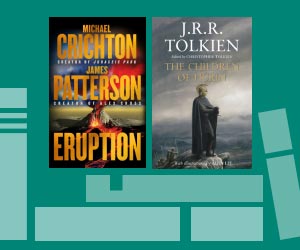Book Overview
One of the three 'Great Tales' of the Elder Days, J.R.R. Tolkien's The Children of H rin takes place in Middle-earth thousands of years before the events of The Hobbit and The Lord of the Rings. The Children of H rin is the first complete book by Tolkien since the 1977 publication of The Silmarillion. Six thousand years before the One Ring is destroyed, Middle-earth lies under the shadow of the Dark Lord Morgoth. The greatest...
Customer Reviews
My new favorite Tolkien novel
children of Huri
My husband's all time favorite book!
An Early Glimpse of Middle earth
Tolkien's Missing Link between the Hobbit Cycle and The Silmarillion tradition
Answers to questions, and a man misplaced in time
A dark yet glorious addition to the Tolkien canon.
a review for the curious LOTR fan
The Children of Húrin Mentions in Our Blog

When an author passes away, it is fairly common for them to leave behind unfinished manuscripts. In other cases, authors have outlined an entire series of books, but are unable to complete them all. Sometimes called continuation books or series, these twelve tag-teamed projects were all started by one author and finished by another.

We've been nerding out about Amazon's upcoming Lord of the Rings series premiering on September 22. So, we're reading everything we can about the history of these epic stories and we've learned some pretty interesting things. Here are ten little-known facts we've uncovered.






